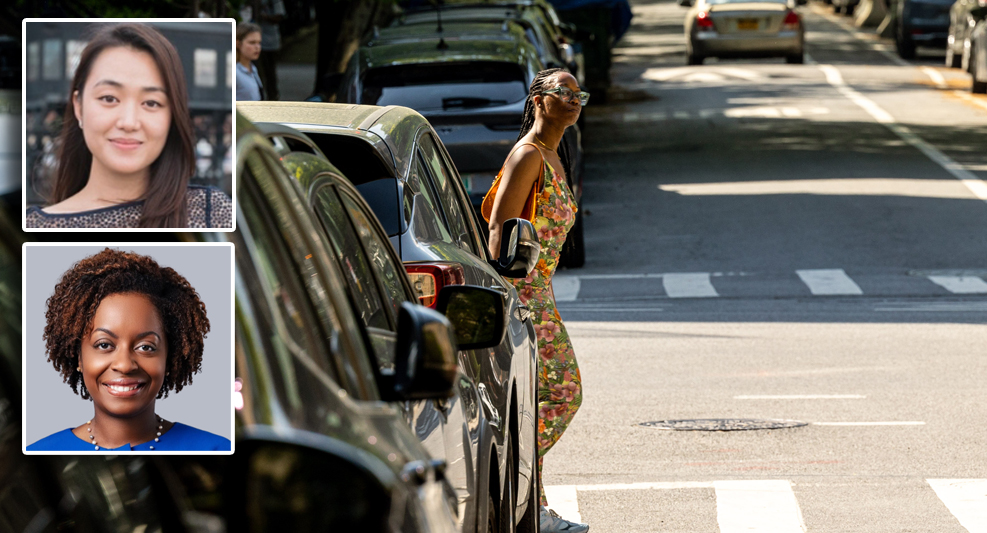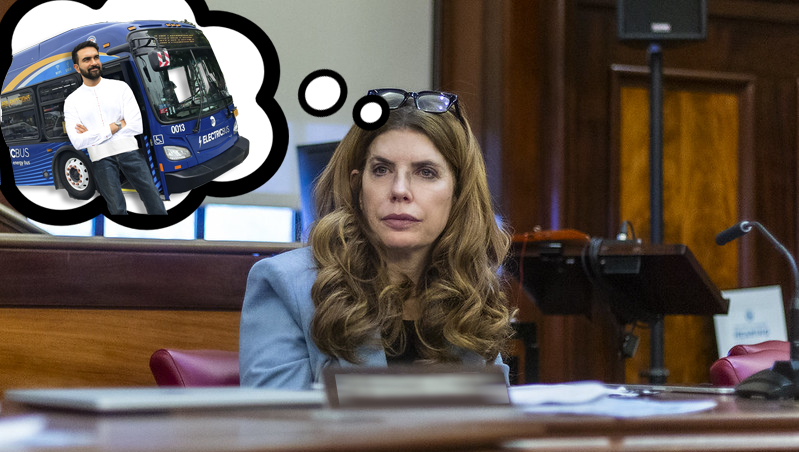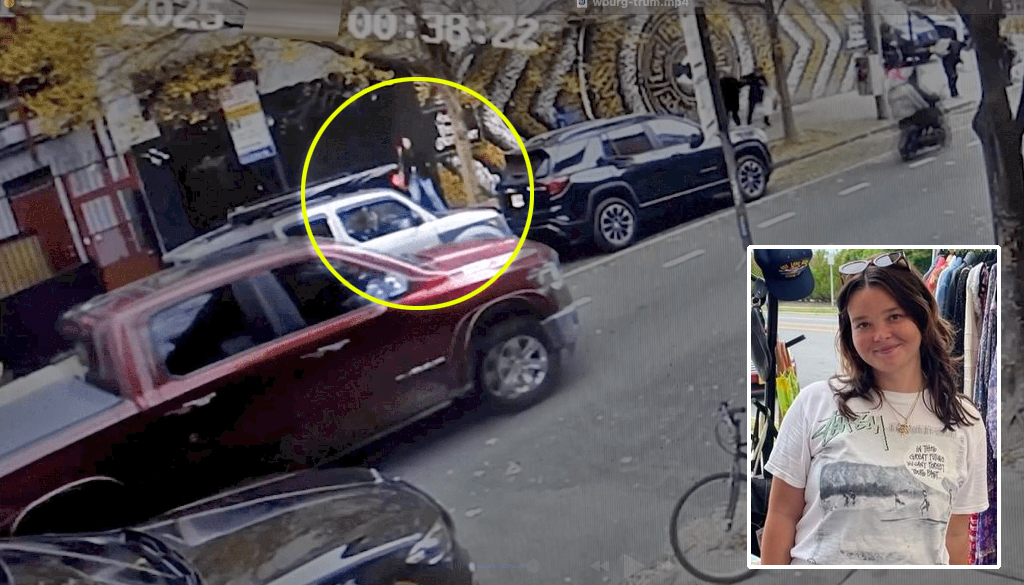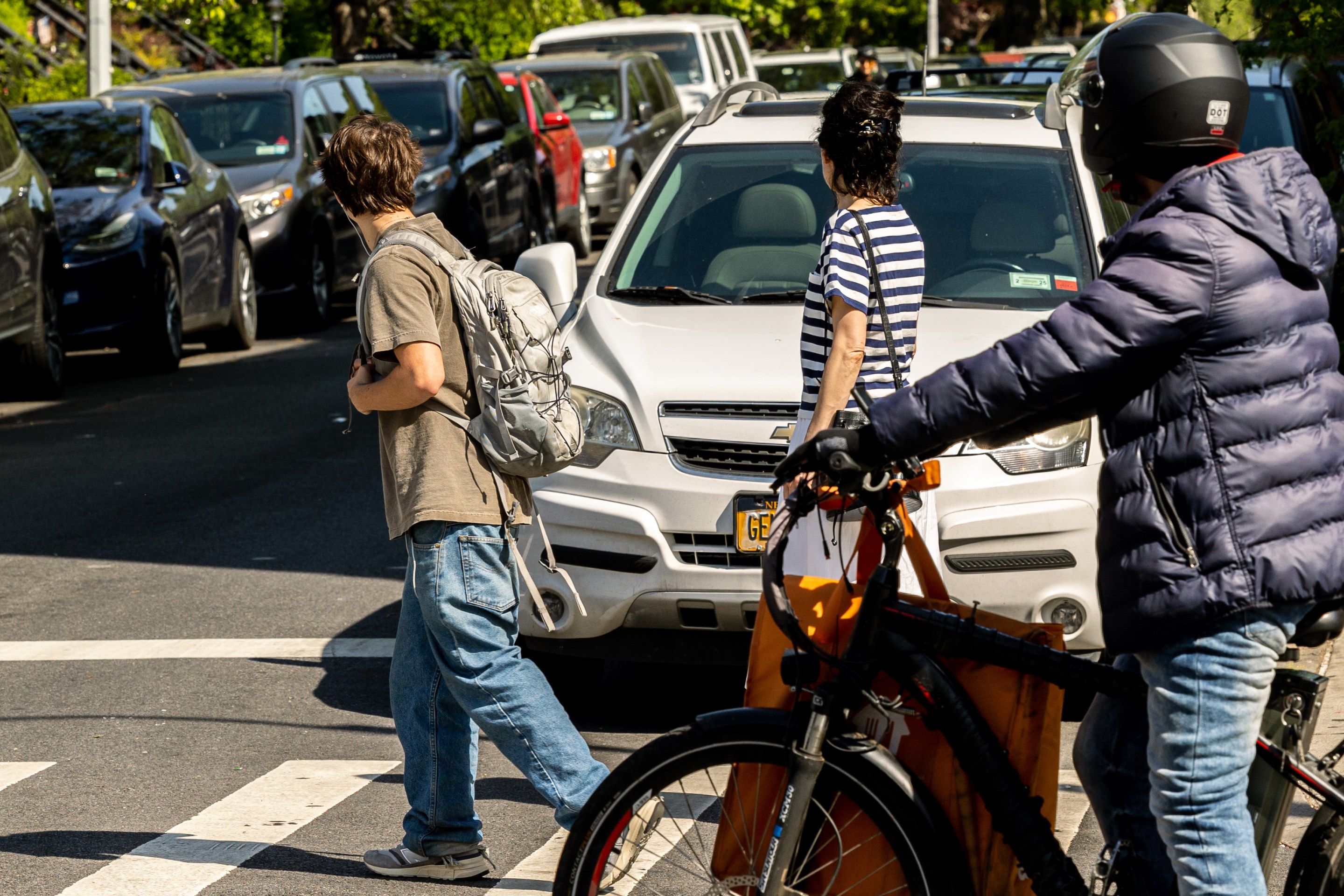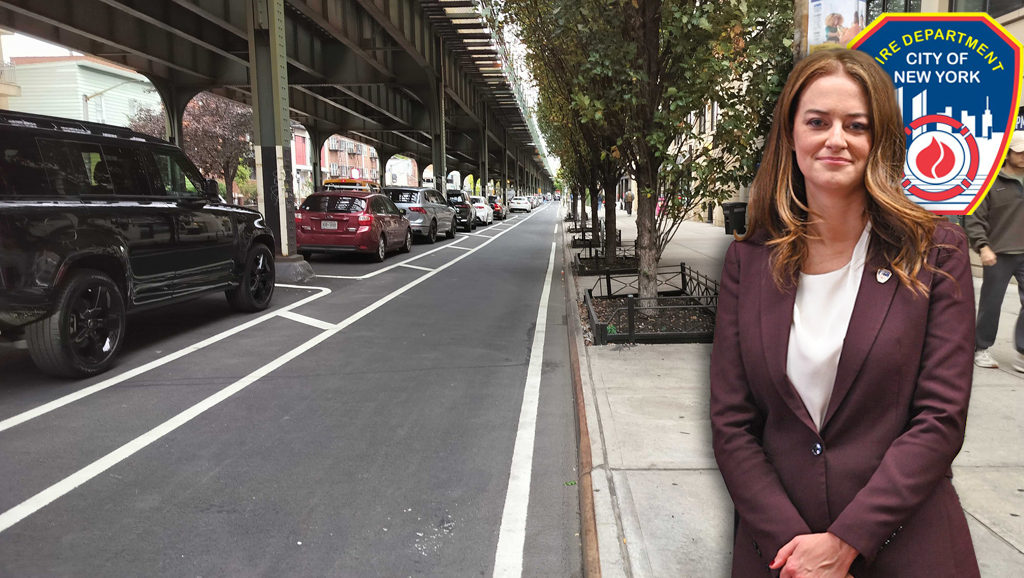 Team Amsterdam's concept for a bike and bus boulevard down Broadway.
Team Amsterdam's concept for a bike and bus boulevard down Broadway.Team Amsterdam won running away at Saturday night's New Amsterdam Bike Slam design battle, the two-team competition to devise the best plan for boosting bicycle modeshare in New York City. But Team New York could go home with their heads high -- they presented a lot of ideas that would work wonders on New York City streets.
The team labels are a little misleading. This was not an exercise in intercity jingoism. Team Amsterdam included Dutch city planners and American designers, by and large, while Team New York featured American planners and Dutch designers. The contest, hosted by Transportation Alternatives and Velo Mondial, asked competitors to come up with an overall vision for increasing bicycling, designs for four specific types of infrastructure, and a plan to make biking culturally mainstream. Some of their ideas you could picture on the streets of New York tomorrow, given sufficient resources. Other concepts were a little more outlandish.
My impression of the evening is that the Amsterdam team won the hearts of the judges thanks to consistent branding, an excellent presentation, and a cohesive message: That biking must become the easy transportation choice for New Yorkers, not the hard choice. They threaded the word "bright" through all of their concepts -- a
brilliant, simple, but not at all obvious choice to associate with the
bicycle (it's also closely associated with a bike coating prototype that team member Michael Mandiberg is developing).
In terms of realistic and effective infrastructure plans,
though, I personally give a slight edge to Team New York. With a tighter presentation, their ideas might have won out.
I'll keep it brief and break down some highlights in bullet point form.
From Team New York:
- "Safe Zones" around bridge approaches with high-visibility bike lanes saturating the grid, a 20 mph speed limit and heightened fines;
- Two-way, separated bike approaches to every bridge entrance;
- A bike boulevard down Broadway -- they presented this concept as a two-way separated path, with plantings, running down the middle of the street with one car lane on each side;
- Separated bike paths on Houston Street;
- Safe zones around every school and public housing development. In the East Village and Lower East Side, if you traffic calm streets and add protected bike infrastructure around these locations, you'd end up with a fairly well-connected grid. To my eyes, this looked like a brilliant strategy for rolling out safe streets infrastructure;
- Different scales of bike parking for different needs, including on-street bike corrals;
- For major employment centers like the Municipal Building: automated secure underground bike parking, a la Japan, encased in an attention-grabbing transparent structure (pretty far out).
 As imagined by Team New York, safe zones would guide cyclists to and from bridge approaches.
As imagined by Team New York, safe zones would guide cyclists to and from bridge approaches.From Team Amsterdam:
- Two-way separated bike approaches to bridge entrances. This team suggested a Williamsburg Bridge bike path stretching to Lafayette Street. I sense a pattern;
- A bike and bus boulevard down Broadway (shown up top, one of the most talked-about images of the night);
- Put most bike infrastructure on neighborhood streets, not traffic sewers like Houston -- a big difference between the two teams;
- A new neighborhood street layout: angled car parking, delivery zones, and bike corrals on one side -- bike lane with no car parking on the other side;
- A grade-separated bike "freeway" slipped underneath the FDR. Bold, but not something that seemed appealing to ride on or worth fantasizing about very much;
- A guarded bike parking hub at the Municipal Building with direct connections to the subway.
 Team Amsterdam's concept for a neighborhood street. The parallel parking spot is for deliveries and the green parallelogram is for bike parking.
Team Amsterdam's concept for a neighborhood street. The parallel parking spot is for deliveries and the green parallelogram is for bike parking.Both teams, I should mention, tied everything together with a robust bike-share network.
If there was anything more captivating than the re-imagination of street space on display Saturday night, it was the spectacle of Meatpacking hotspot Cielo crammed with sustainable transportation geeks, with just a smattering of regular club-goers looking totally perplexed and a little miffed.
An aside about the Meatpacking District: This was the first time I'd seen the Gansevoort area in full swing on a weekend night. You've got to see this traffic to believe it. Looking east from Ninth Avenue and 14th Street, the line of cabs, limos, livery cars, and assorted machines for preening stretched as far as I could see, way beyond Eighth Avenue. The notion that a few pedestrian extensions on Ninth Avenue exacerbate all this gridlock is totally preposterous. People on foot need that space or they'd be risking life and limb crossing the street in front of these impatient drivers.
